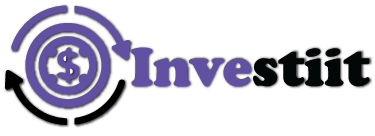In today’s digital world, information leaks, data breaches, and cybersecurity threats are commonplace. One of the significant sources of such leaks is often from websites or platforms where data is shared, sometimes inadvertently. One such incident involves thejavasea.me leaks AIO-TLP, an event that has raised a lot of concerns regarding data privacy and security. In this article, we will explore the details of this leak, its implications, and the broader context of information security.
Understanding AIO-TLP and Its Relevance
Before diving into the specifics of the thejavasea.me leaks AIO-TLP, it is important to understand the term “AIO-TLP” and why it matters.
What Is AIO-TLP?
AIO-TLP stands for All-in-One Tool Leak Pack. In essence, these are collections of tools and utilities that are often shared within specific communities or platforms. These tools may be designed for a variety of purposes, from enhancing software performance to bypassing certain security measures. The “TLP” portion typically refers to “The Leak Pack,” which means a bundle of leaked software or tools that have been distributed without the original creators’ permission.
In many cases, AIO-TLP leaks involve sensitive software or utilities, including those used for hacking, penetration testing, or other activities related to cybersecurity. These leaks are often shared through obscure or less secure channels, which increases the risk of malware or malicious code being embedded within these leaked files.
The Role of thejavasea.me in the Leak
Thejavasea.me is a website or platform that has gained attention in certain circles due to its association with leaked content, particularly software and tool leaks. The platform is not well-known in the mainstream tech industry, but it is widely recognized within niche online communities that deal with hacking, software cracks, and cybersecurity.
The website’s purpose often revolves around sharing and distributing resources that might otherwise be difficult to access or are protected by licensing agreements. This is where thejavasea.me leaks AIO-TLP comes into play.
The Impact of thejavasea.me Leaks AIO-TLP
Breaching Security Protocols
The thejavasea.me leaks AIO-TLP incident highlights several concerns related to security and privacy. For one, when these types of tools are leaked without authorization, they can bypass security protocols. The tools that are bundled in these leak packs are often designed to exploit vulnerabilities, some of which can compromise the integrity of systems, networks, or applications.
Many users who download such tools might unknowingly expose their systems to significant risks. Malware, ransomware, and spyware can be packaged within these leaks, potentially affecting the user’s personal data and the security of the systems they are running.

Legal and Ethical Considerations
Another issue that arises from thejavasea.me leaks AIO-TLP is the legal and ethical implications. Sharing or downloading leaked software or tools is generally considered illegal, especially if the content was distributed without proper licensing or permission from the creators. The copyright holders of these tools may pursue legal action against those responsible for the leaks, leading to fines and other penalties.
Additionally, the ethical aspect cannot be overlooked. By downloading and using leaked tools, users contribute to the perpetuation of illegal activity. Furthermore, the consequences of using such software can extend beyond just legal ramifications, potentially affecting innocent parties if systems or data are compromised.
The Risk of Malware
A significant concern when dealing with leaked content is the potential for malware. In many cases, malware is deliberately added to leaked software to exploit the users who download it. Malicious actors can hide viruses, trojans, worms, or other types of harmful code within these leaks, making it difficult for unsuspecting users to identify the threat.
For example, a user might download what they think is a legitimate tool for performance enhancement, but in reality, it could be packed with malicious payloads designed to steal data or cause damage to the computer’s operating system.
How thejavasea.me Leaks AIO-TLP Affects Users
Compromising Personal Data
One of the most pressing concerns regarding thejavasea.me leaks AIO-TLP is how such leaks can jeopardize personal data. As mentioned earlier, many of the leaked tools can contain malicious code that may compromise the security of a user’s personal information. This includes passwords, banking details, social media accounts, and other sensitive data that could be exploited for malicious purposes.
Once a user’s system is infected, it could lead to a breach of their privacy, financial losses, and identity theft. These consequences are particularly severe for individuals who are not aware of the risks of downloading leaked content.
Spreading to Larger Networks
In some cases, the leaks could also affect larger networks, especially in corporate environments. If employees download leaked tools, they could inadvertently introduce security vulnerabilities into the company’s infrastructure. This could lead to a company-wide breach of data, affecting not only the business itself but also its clients, partners, and stakeholders.
The spread of malware through leaked software has the potential to disrupt entire networks and cause long-term damage to business operations. The cost of repairing such breaches can be significant, both in terms of financial losses and reputation damage.
Losing Trust in Online Communities
The thejavasea.me leaks AIO-TLP also contribute to a loss of trust in online communities. As leaks like this spread through forums and social media platforms, users may begin to question the security and integrity of the sources they rely on for information or software tools. This undermines the overall credibility of the online spaces that share such content.
People who once trusted a particular website or platform for useful information may now view it with skepticism, and some might choose to leave or avoid interacting with it altogether.
Preventing and Protecting Against Leaked Tools
While thejavasea.me leaks AIO-TLP represents a serious issue, there are steps users and organizations can take to protect themselves from the dangers of leaked software and malware.
Avoiding Leaked Software
The best way to avoid the risks of downloaded leaks is to steer clear of unauthorized sources altogether. Relying on trusted websites, platforms, and official channels to obtain software can significantly reduce the risk of encountering malicious tools. Avoid downloading cracked versions of paid software or accessing toolpacks from unknown sources like thejavasea.me.
Using Antivirus Software
Always ensure that your system is equipped with updated antivirus software to detect and neutralize any malware that might come from suspicious downloads. These tools can scan files and identify malicious code before it can do significant damage to your system.
Regularly Updating Your Software
Keeping your system and applications up to date is another essential security measure. Developers regularly release patches and security updates to address vulnerabilities in their software. By staying on top of these updates, you can mitigate the risk of exploitation by hackers or malicious actors who might take advantage of known security flaws.
Implementing Multi-Factor Authentication
For extra protection, particularly for sensitive accounts such as email or financial accounts, consider using multi-factor authentication (MFA). MFA requires more than just a password to log in, making it harder for hackers to gain unauthorized access, even if they have obtained your login details.
Conclusion: The Ongoing Battle for Cybersecurity
In conclusion, the thejavasea.me leaks AIO-TLP incident serves as a stark reminder of the constant threats in the realm of cybersecurity. The consequences of downloading leaked tools can be dire, including malware infections, compromised personal data, legal issues, and more. It is crucial for users and organizations to understand the risks associated with such leaks and to take the necessary precautions to protect their systems and data.
As technology continues to evolve, so too do the tactics used by malicious actors. Cybersecurity must remain a priority, and users must stay vigilant when navigating the digital landscape. By following best practices and remaining cautious about where and how we access software and tools, we can reduce the likelihood of falling victim to these types of leaks.

